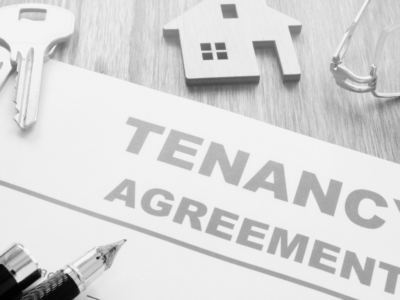While reports about a slump in house sales and dropping prices quite naturally attract the attention of a headline-hungry press, the reality is that it is hardly surprising that a bit of steam is coming off the residential property market in Scotland.
It is fair enough to note, as the RICS has just done, that new buyer demand and instructions to sell are down, and that, as the Halifax has just reported, average house prices in Scotland dropped by a couple of thousand pounds in the past month.
But it is also reasonable to reflect that this sudden jitteriness, this unaccustomed attack of nerves, follows a sustained period of what a former Federal Reserve chairman once called irrational exuberance.
Almost as soon as the initial shock of Covid and its associated closure of the market wore off, buyers were out and about again like greyhounds after a rabbit.
Most of 2021 and 2022 were more than buoyant, with assets in good demand and prices, in many cases, soaring above Home Report valuations.
Indeed, it would be quite remarkable if the market had not taken a knock from the barrage of blows at the end of last and the start of this year – interest rates at record levels, the spike in utility bills, the cost-of-living impact and the legacy of the previous No 10 incumbent’s foray onto the wilder and unknown shores of Trussonomics.
It is instructive to recall that interest rates at this time last year were 0.5%.
In August last year, they were 1.75% and now they are at 4%, with maybe a slight further increase to come.
Reports of lenders pulling deals and heading for the hills have all added fuel to the fire.
Once again, it falls to property professionals to throw around the cold water of reality.
The fact is that there has been a simple repricing of finance.
Sales are back on the table and the money to finance them is still there – it just costs a bit more to borrow it.
The general sentiment among professionals and, more importantly, the Bank of England, is that interest rates are now getting to where they need to be to do their job properly, with the medium to long term range likely to settle in the 3% to 4% bracket.
What has happened in the last decade or so has been the aberration, not the norm, and many economists feel that over the next 12 to 18 months, the market will now begin to stabilise.
A slight slowdown also affords agents the opportunity to clear stubborn stock since, with supply being constrained, buyers can reconsider their purchase options, based around what more limited choice of stock may be available.
Are we over the hump in terms of inflation?
That does seem to be the consensus and, barring unforeseeable geopolitical shocks – perhaps predicated around the behaviour of Mr Putin – it is currently forecast to fall dramatically over the course of this year.
We should also remember that we are, at the time of writing, only getting warmed up in 2023, and no one is ever going to make hay at this dark and depressing time of the year.
After the rollercoaster ride of recent years, a market with more normal cyclical curves would be something of a relief.
Though demand may have tempered slightly, agents in Scotland’s cities are still getting interest, especially in good areas, though perhaps the sums being offered over Home Report value are not quite as stratospheric as they have been of late.
Edinburgh, as ever, tops the pricing league and entry to its market remains a distant dream for many.
Lack of stock remains a pressing issue – in Aberdeen, for instance, there are fewer properties listed than at any time since 2016
One concerning factor is the effect of housing transaction tax policies in Scotland as the divergence from the rest of the UK becomes ever more extreme.
A 10% LBTT rate is levied on properties sold for more than £325,000, heavily penalising buyers such as nurses, teachers and office workers.
Murmurs about people moving to Northern England, where this is an option for them in order to escape such impositions, are becoming louder although these can hopefully remain no more than murmurs.
The increase in the LBTT Additional Dwelling Supplement in the Scottish Budget in December means that buyers will pay double the rate in force in England and Northern Ireland and 2% more than in Wales.
Rent freezes and eviction bans are also adversely affecting the Scottish private rental sector, with increasing numbers of landlords exiting rather than bearing what is rapidly becoming an unsupportable burden of regulation and restriction of trade.
All these things having been said, it is prudent to remain pragmatic and realistic. Investing in the housing market was never a short-term play, and those – the vast majority – who have been in for the medium-to-long term have consistently done very well.
There is no evidence to suggest this is about to change any time soon.






















Comments